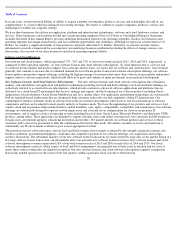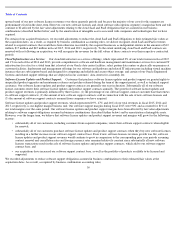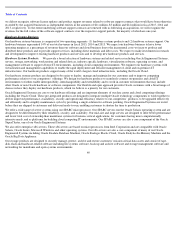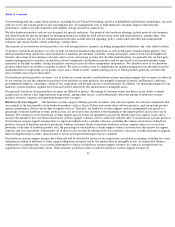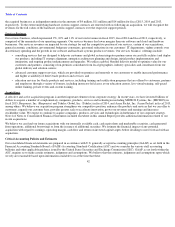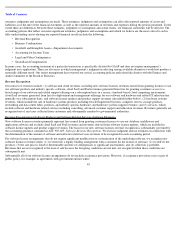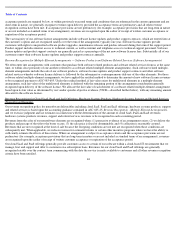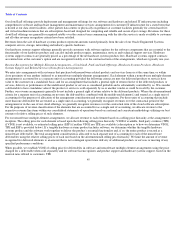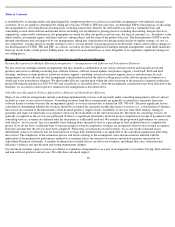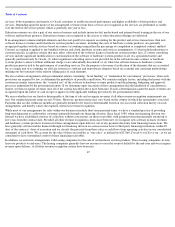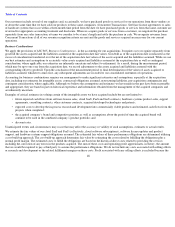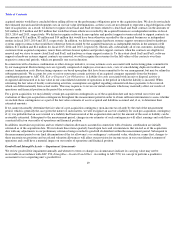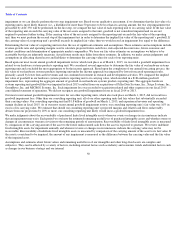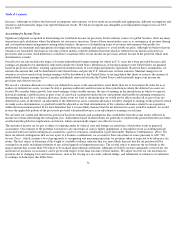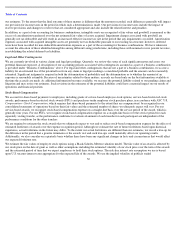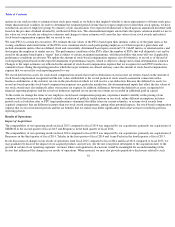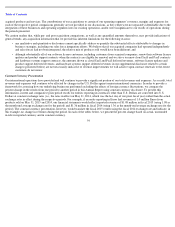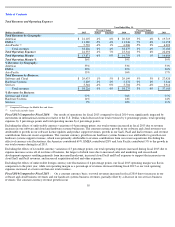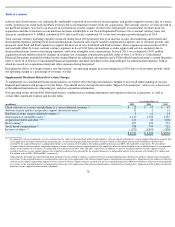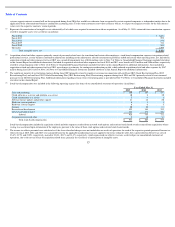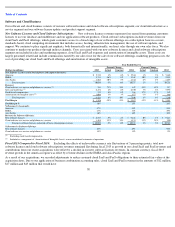Oracle 2014 Annual Report Download - page 52
Download and view the complete annual report
Please find page 52 of the 2014 Oracle annual report below. You can navigate through the pages in the report by either clicking on the pages listed below, or by using the keyword search tool below to find specific information within the annual report.
Table of Contents
Our customers include several of our suppliers and, occasionally, we have purchased goods or services for our operations from these vendors at
or about the same time that we have sold our products to these same companies (Concurrent Transactions). Software license agreements or sales
of hardware systems that occur within a three-
month time period from the date we have purchased goods or services from that same customer are
reviewed for appropriate accounting treatment and disclosure. When we acquire goods or services from a customer, we negotiate the purchase
separately from any sales transaction, at terms we consider to be at arm’s length and settle the purchase in cash. We recognize revenues from
Concurrent Transactions if all of our revenue recognition criteria are met and the goods and services acquired are necessary for our current
operations.
Business Combinations
We apply the provisions of ASC 805, Business Combinations , in the accounting for our acquisitions. It requires us to recognize separately from
goodwill the assets acquired and the liabilities assumed at the acquisition date fair values. Goodwill as of the acquisition date is measured as the
excess of consideration transferred over the net of the acquisition date fair values of the assets acquired and the liabilities assumed. While we use
our best estimates and assumptions to accurately value assets acquired and liabilities assumed at the acquisition date as well as contingent
consideration, where applicable, our estimates are inherently uncertain and subject to refinement. As a result, during the measurement period,
which may be up to one year from the acquisition date, we record adjustments to the assets acquired and liabilities assumed with the
corresponding offset to goodwill. Upon the conclusion of the measurement period or final determination of the values of assets acquired or
liabilities assumed, whichever comes first, any subsequent adjustments are recorded to our consolidated statements of operations.
Accounting for business combinations requires our management to make significant estimates and assumptions, especially at the acquisition
date, including our estimates for intangible assets, contractual obligations assumed, restructuring liabilities, pre-acquisition contingencies and
contingent consideration, where applicable. Although we believe the assumptions and estimates we have made in the past have been reasonable
and appropriate, they are based in part on historical experience and information obtained from the management of the acquired companies and
are inherently uncertain.
Examples of critical estimates in valuing certain of the intangible assets we have acquired include but are not limited to:
Unanticipated events and circumstances may occur that may affect the accuracy or validity of such assumptions, estimates or actual results.
We estimate the fair values of our cloud SaaS and PaaS (collectively, cloud software subscriptions), software license updates and product
support, and hardware systems support obligations assumed. The estimated fair values of these performance obligations are determined utilizing
a cost build-up approach. The cost build-up approach determines fair value by estimating the costs related to fulfilling the obligations plus a
normal profit margin. The estimated costs to fulfill the obligations are based on the historical direct costs related to providing the services
including the correction of any errors in the products acquired. The sum of these costs and operating profit approximates, in theory, the amount
that we would be required to pay a third party to assume the performance obligations. We do not include any costs associated with selling efforts
or research and development or the related fulfillment margins on these costs. Profit associated with any selling efforts is excluded because the
48
•
future expected cash flows from software license sales, cloud SaaS, PaaS and IaaS contracts, hardware systems product sales, support
agreements, consulting contracts, other customer contracts, acquired developed technologies and patents;
•
expected costs to develop the in-
process research and development into commercially viable products and estimated cash flows from the
projects when completed;
•
the acquired company’s brand and competitive position, as well as assumptions about the period of time the acquired brand will
continue to be used in the combined company
’
s product portfolio; and
•
discount rates.


